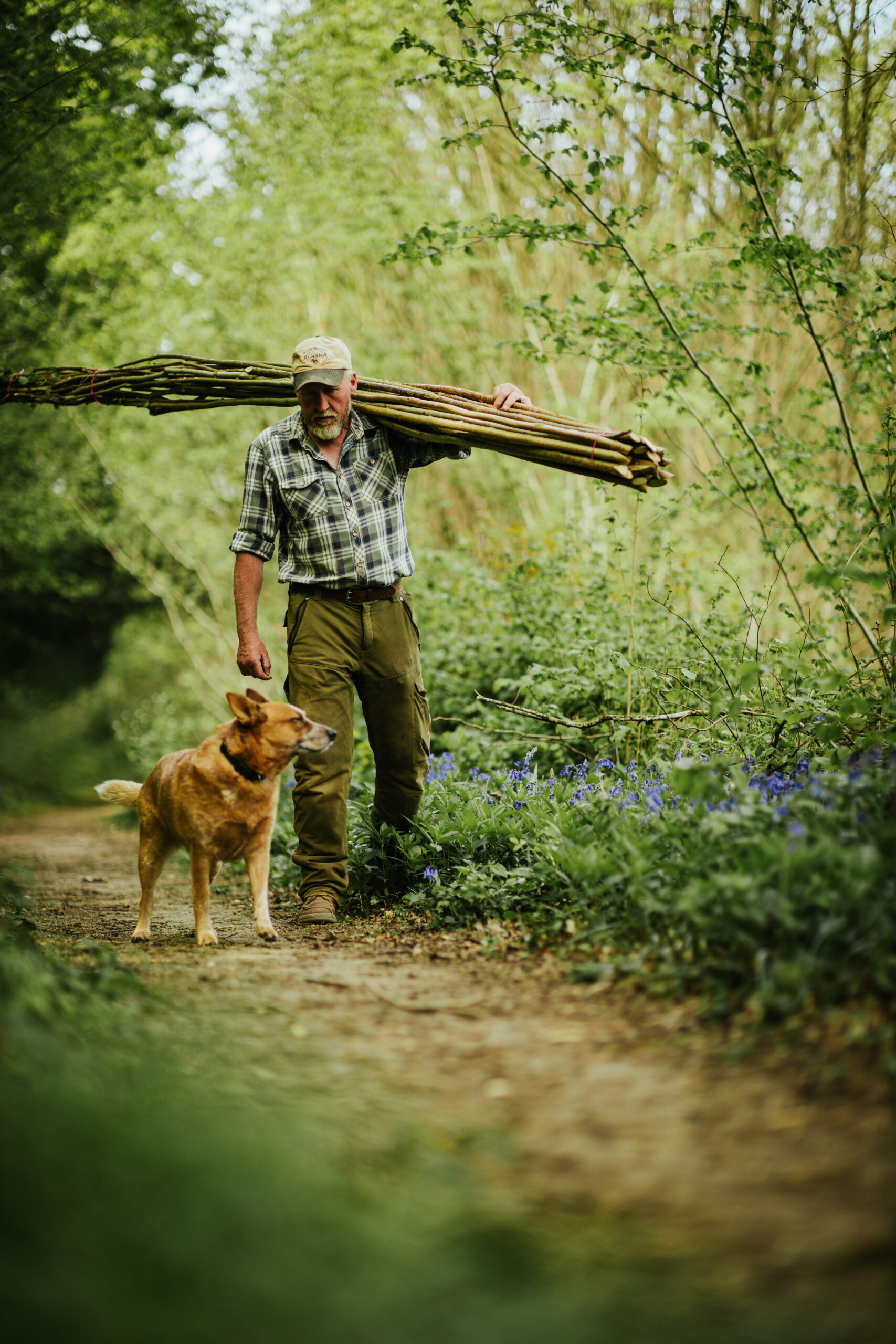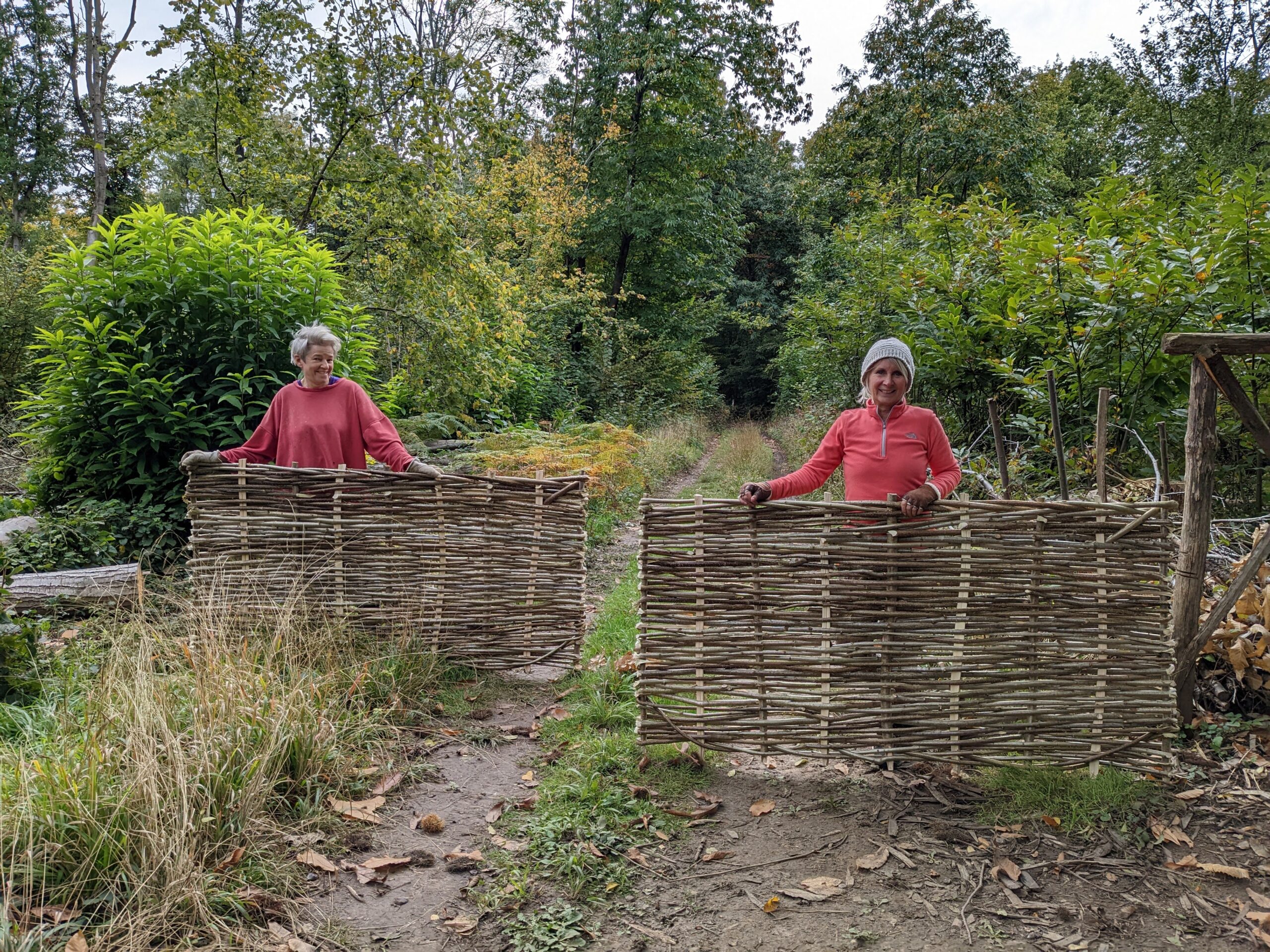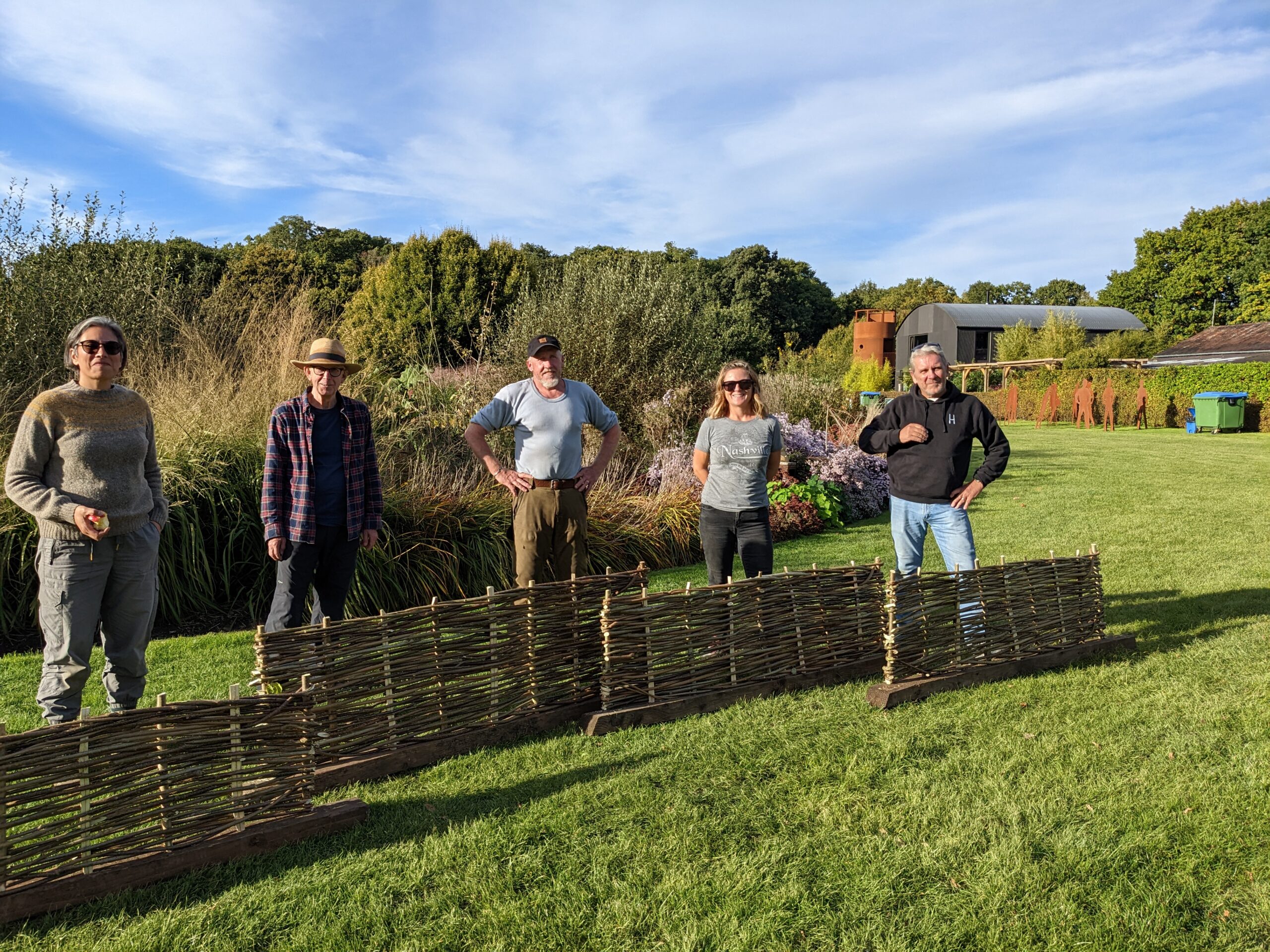Wattle hurdles embody a craft deeply rooted in the pastoral traditions of Britain, having served both functional and aesthetic purposes in rural landscapes for centuries. This ancient technique, primarily involving the weaving of split Hazel rods into panels, showcases a harmonious blend of functionality, sustainability, and craftsmanship that has withstood the test of time, still finding relevance and appreciation in modern contexts.
Historically, wattle hurdles were primarily used for agricultural purposes, particularly in the management and rotation of livestock within fields. The portable nature of these hurdles allowed farmers to create temporary pens or to section off parts of fields with ease, facilitating controlled grazing and the maintenance of pasture land. Beyond their utilitarian use in agriculture, wattle hurdles also played a significant role in traditional building practices serving as a flexible formwork for daub or cob in wattle and daub construction, a method widely used in timber-framed buildings across medieval Europe.
The craft of making wattle hurdles is deeply ingrained in the heritage of woodland management and traditional carpentry. It begins with, the selection of suitable materials, primarily the flexible and durable shoots of willow or hazel. These materials are chosen, not only for their physical properties but also for their abundance and renewability, highlighting an early understanding of sustainable resource use. Coppicing, a method of woodland management, that involves periodically cutting tree stems to ground level to promote regrowth, provides an ongoing supply of the young shoots ideal for hurdle making.

The construction of a wattle hurdle is a testament to the skill and patience of the craftsman. It involves setting up a series of upright stakes, typically hazel for its straightness and strength, into a portable frame. Between the stakes (uprights), flexible rods are then skillfully woven in an over-and-under pattern, creating a tight and sturdy lattice. The degree of spacing and the specific weaving pattern can be adjusted based on the intended use of the hurdle, whether for fencing, animal enclosures, or decorative garden elements.
Despite the advent of modern materials and construction techniques, the appeal of wattle hurdles persists. They offer an eco-friendly alternative to synthetic fencing, blending seamlessly into natural landscapes and supporting biodiversity by providing habitats for various species. Furthermore, the revival of interest in traditional crafts and sustainable living has led to a renewed appreciation for the skills involved in making wattle hurdles, with workshops and courses in rural skills becoming increasingly popular.

Wattle hurdles stand as a living heritage, a link to a time when the rhythms of agricultural life dictated the ingenuity and resourcefulness of rural communities. They remind us of the importance of sustainability, the value of handcrafted goods, and the enduring connection between humans and the natural environment. As we navigate the challenges of the modern world, the principles embodied in the craft of wattle hurdles offer timeless lessons in harmony, sustainability, and resilience.
Traditional Wattle Hurdle Making is, however, at risk of decline due to various factors including the decline in Skilled Artisans and subsequently the intricate skills and nuanced understanding required are at risk of being lost.

Recognizing the cultural, ecological, and aesthetic value of wattle hurdles, various stakeholders including Hedges & Hurdles Country Skills & Crafts have initiated efforts to preserve this heritage craft. These include educational programs aimed at teaching the skills to new generations, the promotion of sustainable and local craftsmanship as an antidote to mass-produced goods, and the incorporation of traditional techniques into modern environmental management practices.
Sustainable Resource Management: The craft depends heavily on the sustainable management of coppice woodlands, primarily willow and hazel, which are the primary materials for hurdle making. The decline in traditional woodland management practices, partly due to the reduced economic viability of coppicing and shifts in land use, affects the availability of quality materials for hurdle making. Without a steady and sustainable source of materials, the craft faces practical challenges in its continuation.
To prevent the craft from becoming endangered, a multifaceted approach is necessary. This includes fostering a market for wattle hurdles that appreciates the value of handcrafted, sustainable products, and supporting artisans through fair trade practices. Additionally, integrating traditional crafts into contemporary environmental and educational initiatives could offer new avenues for the application of these skills. Lastly, promoting the cultural significance and ecological benefits of wattle hurdle-making can help raise awareness and appreciation, ensuring that this ancient craft continues to be practiced and valued in the modern age.
If you would like to learn more about the issues affecting the viability of the craft of Hurdle Making see the Red List of Endangered Crafts page on the Heritage Crafts website here: Wattle Hurdles (endangered craft)
At Hedges & Hurdles Country Skills & Crafts our co-founder Paul Matthews is a highly skilled Wattle Hurdle maker, you only have to read the testimonials from our satisfied trainees to know he is a knowledgeable and passionate tutor, keen to pass on his skills and knowledge to others.
We are offering 3 types of courses for Wattle Hurdle Making:
If you are keen to learn the skills of Hurdle Making do take a look at our website for more information and dates for our forthcoming courses:
Wattle Hurdle Training Course (2-day)
Mini Wattle Hurdle Training Course (1-day)
Courses are suitable for both beginners and improvers.

Paul will also demonstrate the traditional art of Wattle Hurdle Making (using Willow) at the Cranleigh Farming & Food Festival on Sunday, 14th July 2024 if you would like to pop along and say hello.


07446837492
lorraine@hedgesandhurdles.com
Burnley, Green Lane. Whitebushes, Redhill, Surrey, RH1 5LJ
Privacy Policy – Terms – Website Terms – Commercial Terms